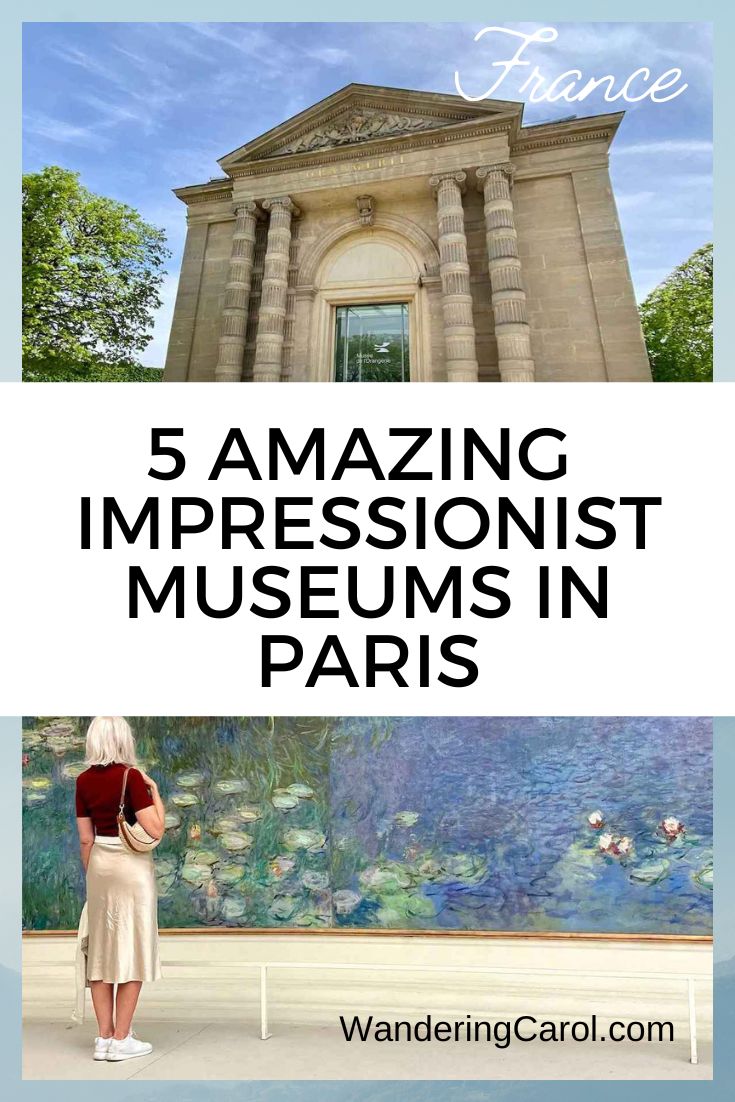This post may contain affiliate links.
I followed in the artistic footsteps of my late parents as I explored the finest Impressionist museums in Paris. Here’s my comprehensive guide to the must-visit locations.
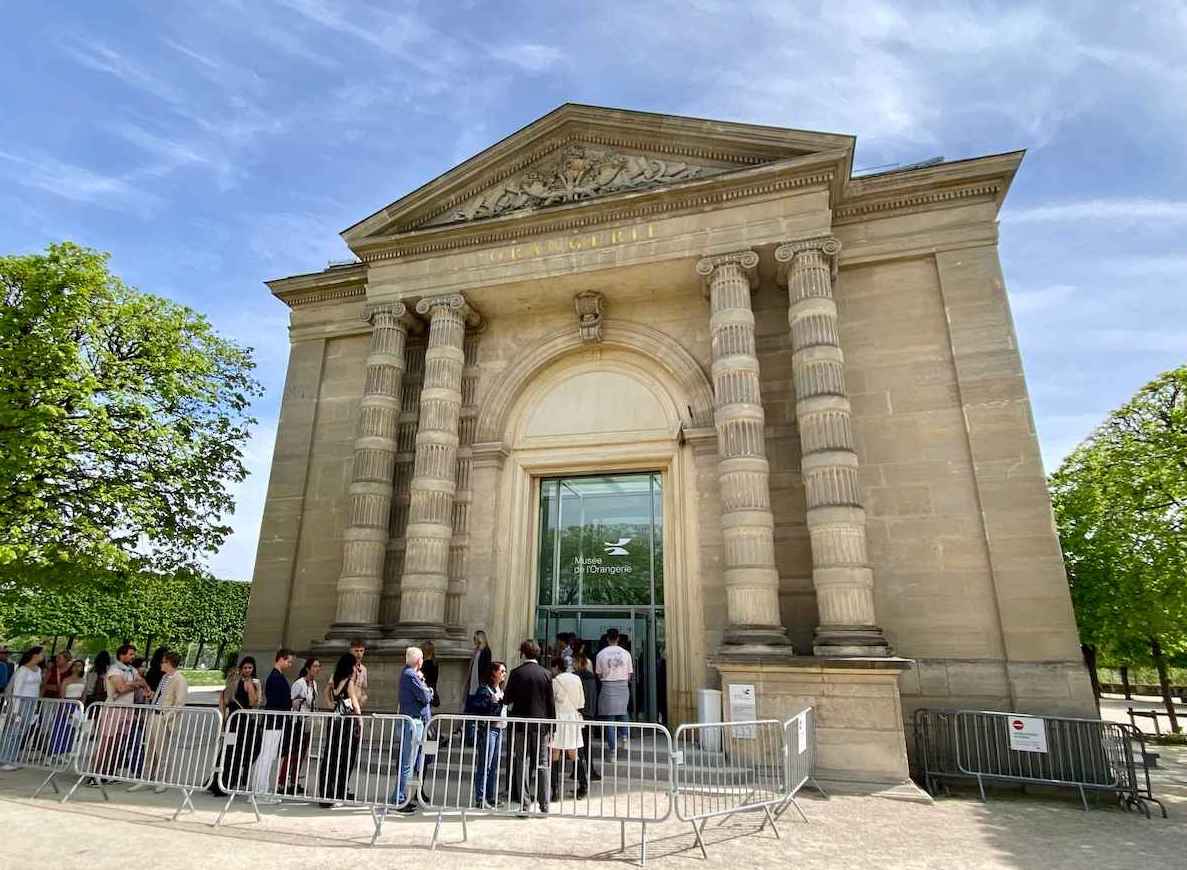
Top Impressionist Museums in Paris
When Impressionism began to take shape as a full-fledged art movement around 1874, it was as refreshing as blossoming wisteria in spring and as vibrant as a lively absinthe bar in Montmartre, yet it was often misunderstood.
Today, we can’t imagine art history without it, and exploring the top Impressionist museums in Paris is one of the easiest ways to appreciate this vital movement.
Some museums, like the Musée d’Orsay, overflow with masterpieces, while others, such as the Musée Fournaise—located on the charmingly named Island of the Impressionists—are smaller but enriched by their beautiful surroundings.
Each location offers something unique.
A Lasting Artistic Legacy
Impressionism holds a deeply personal significance for me.
In the 1950s, my artistic parents, William Perehudoff and Dorothy Knowles, eloped to Paris, spending several weeks immersing themselves in France’s artistic heritage, a journey that I have mirrored throughout my life.
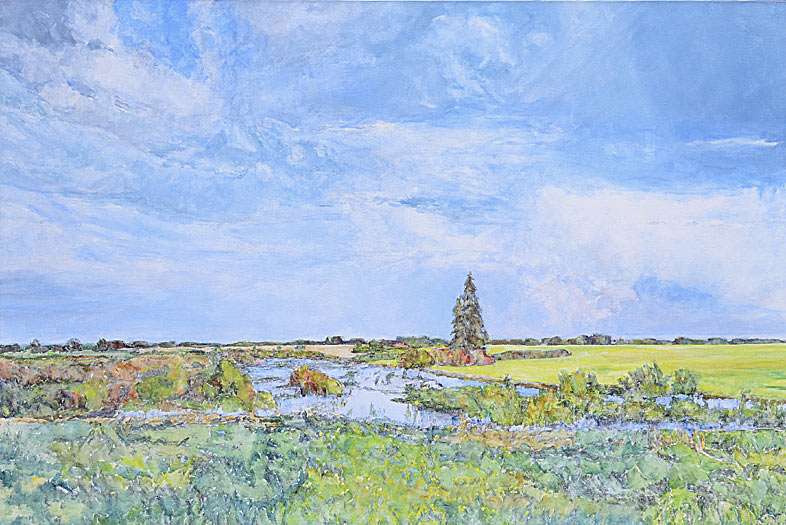

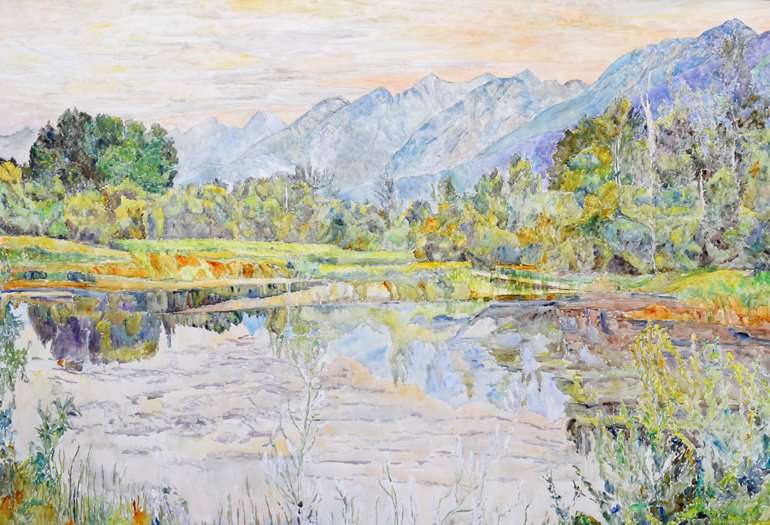

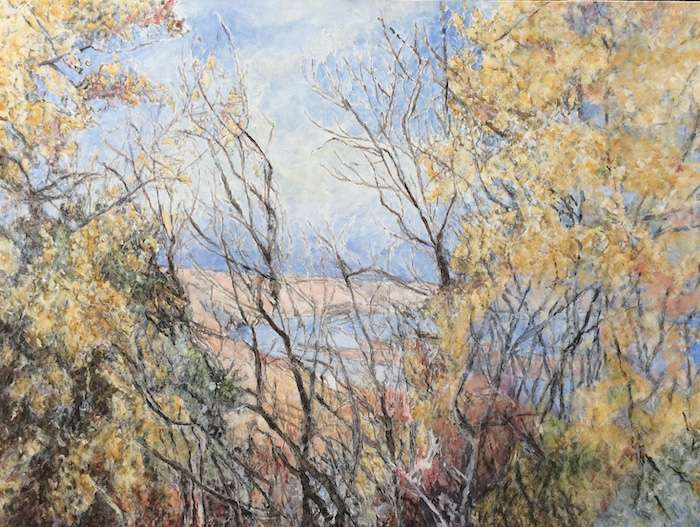

The Influence of the Impressionists
My mother dedicated herself to capturing the Canadian landscape, particularly in Saskatchewan, a passion that earned her the Royal Order of Canada. (Fairly, my father, an abstract artist, was awarded the same honor.)
She was particularly inspired by the Impressionists, sharing their passion for light, nature, and the immediate experience of painting outdoors.
Having lost my mother a year ago, this journey not only reflects my walk through the history of Impressionism but also continues her legacy.
Exploring Paris through its galleries is a remarkable way to engage with French culture and its diverse regions. Here’s how to immerse yourself fully.
Discovering the Best of Impressionism in Paris
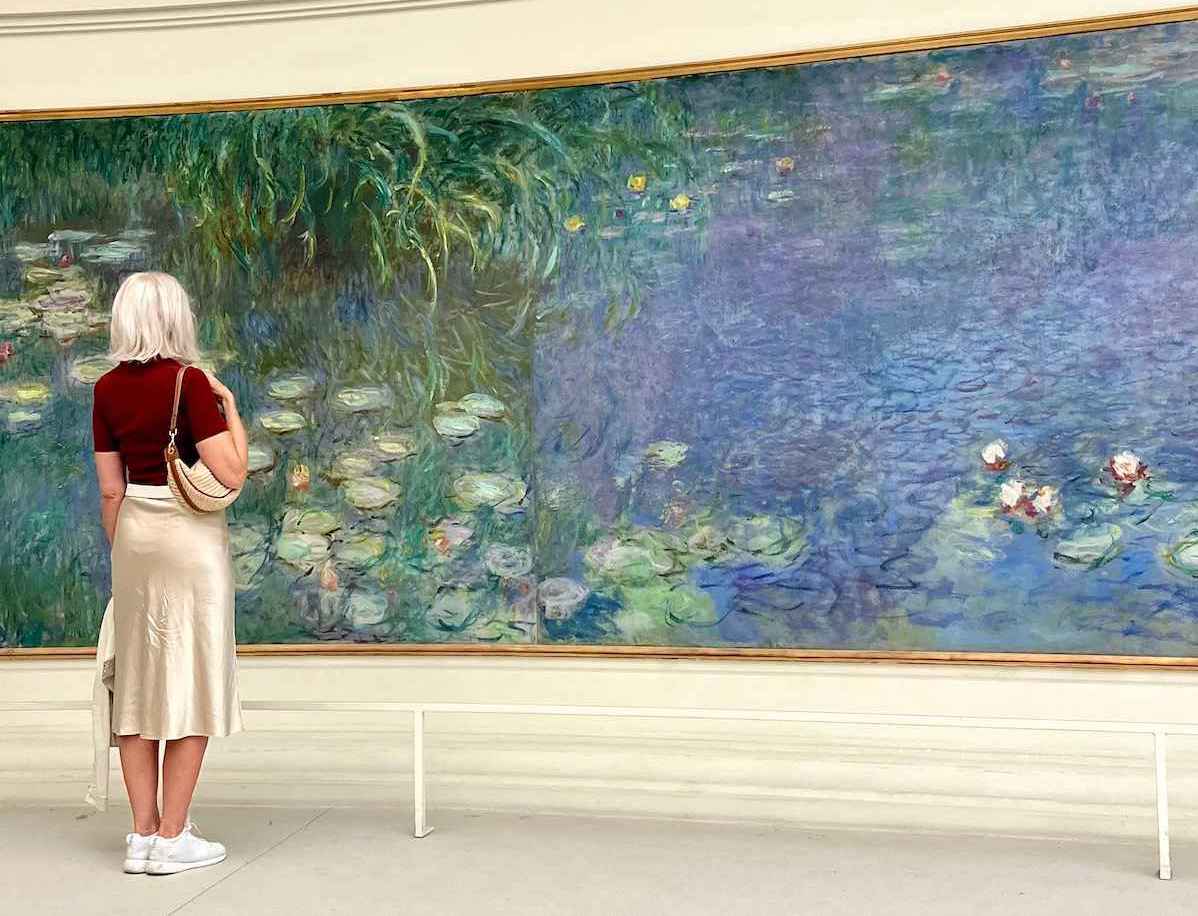

Musée de l’Orangerie: Monet’s Masterpiece Awaits
If you were to distill Impressionism into a single, perfect moment, you’d find it at the Musée de l’Orangerie, which I chose as the starting point for my latest Impressionist adventure.
Located in the Tuileries Garden, the Orangerie Museum is a delightful treasure trove, home to a stunning collection of Monet’s grand Water Lilies series, the Nymphéas.
Monet was captivated by the fluidity of water, and these expansive paintings, created during the latter part of his career, present a dreamy vision of pastel colors, reflections, and light.
A Gift from Monet
Donated by Claude Monet himself, the Nymphéas evoke the tranquility of his garden in Giverny and illustrate his mastery in interpreting its beauty.
Although much of Paris has changed over the past century, the Musée de l’Orangerie has showcased the Nymphéas since 1927.
I like to believe I stand where my mother once stood, perhaps nurturing the inspiration for her own series of water lily paintings in the 1980s.
🇫🇷 Travel Tips for the Orangerie Museum
- Address: Tuileries Garden, Place de la Concorde (Seine side) 75001 Paris.
- Visit the Orangerie website for more information.
- Purchase a reserved entry ticket to the Musée de l’Orangerie here.
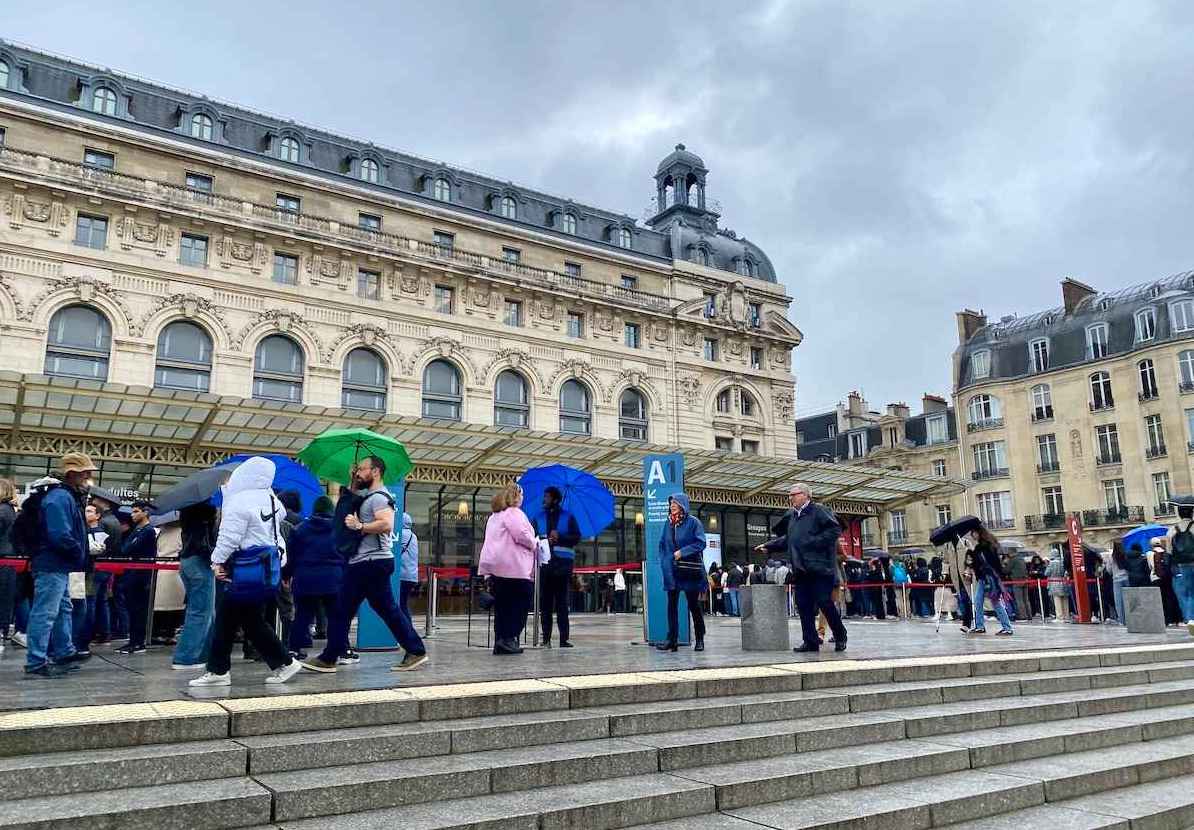

Musée d’Orsay: A Feast for the Eyes
The next morning, I joined a group of journalists from Japan and the USA for a tour of the beloved Musée d’Orsay, the most renowned Impressionist museum in Paris.
Once a grand train station—a stunning example of Beaux-Arts architecture—the Musée d’Orsay transformed into a museum in 1986.
Today, it boasts the largest collection of Impressionist art globally, featuring five of Claude Monet’s Rouen Cathedral paintings alongside Manet’s infamous Le Déjeuner Sur l’Herbe.
With a glorious collection of Monet, Manet, and Morisot’s works, you could almost envision yourself dancing with them at the outdoor dance hall, Moulin de la Galette, immortalized by Renoir.
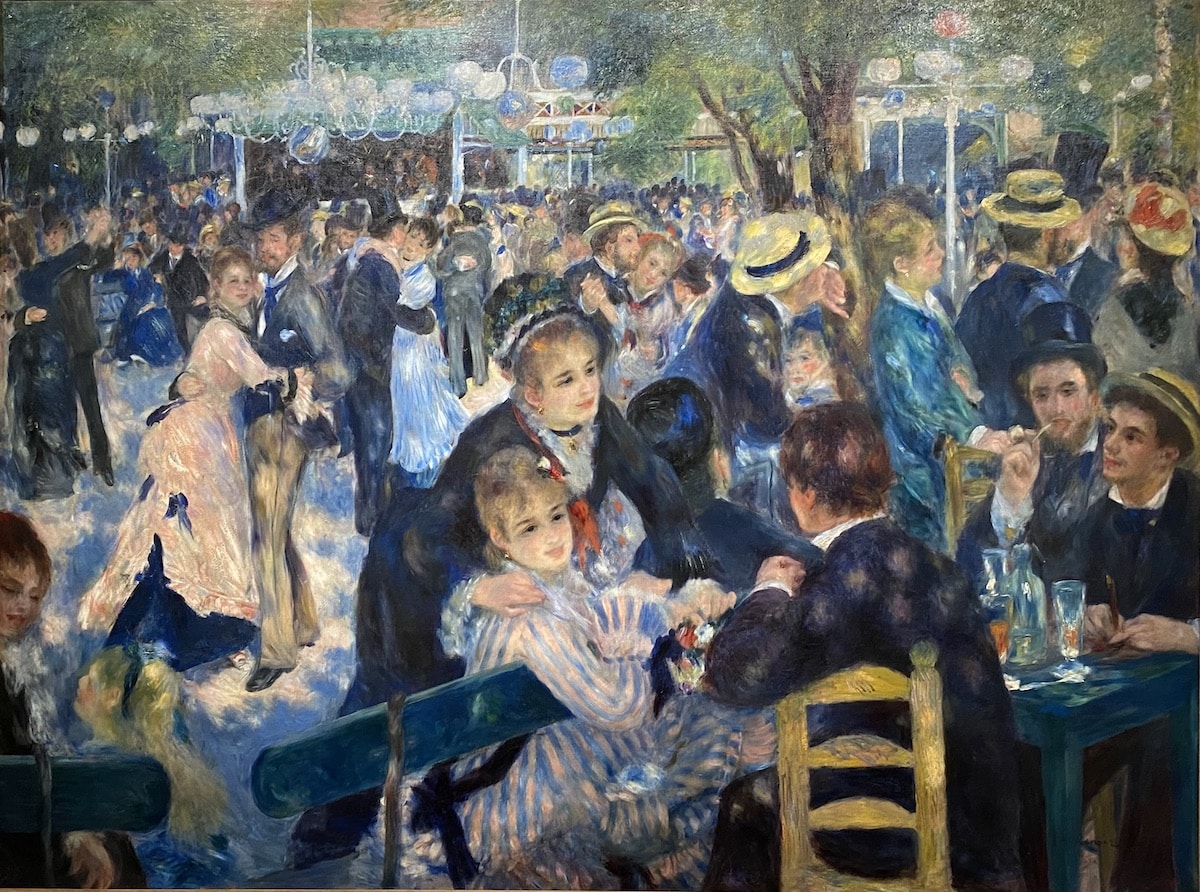

Young Artists in Paris
As I gazed at Renoir’s expressive strokes capturing the vibrancy of social gatherings in Montmartre, I reflected on how these artworks may have influenced my parents’ artistic journeys.
Raised during the Great Depression in Saskatchewan, they had a creative drive that shone through from a young age, despite their humble beginnings.
My father, who had to leave school to work on the family farm, managed to save enough to study at the Colorado Springs School of Fine Art under the guidance of the French muralist Jean Charlot.
He later studied in New York with Amédée Ozenfant, one of the founders of Purism—an art style that stripped decorative elements from the Cubism movement.
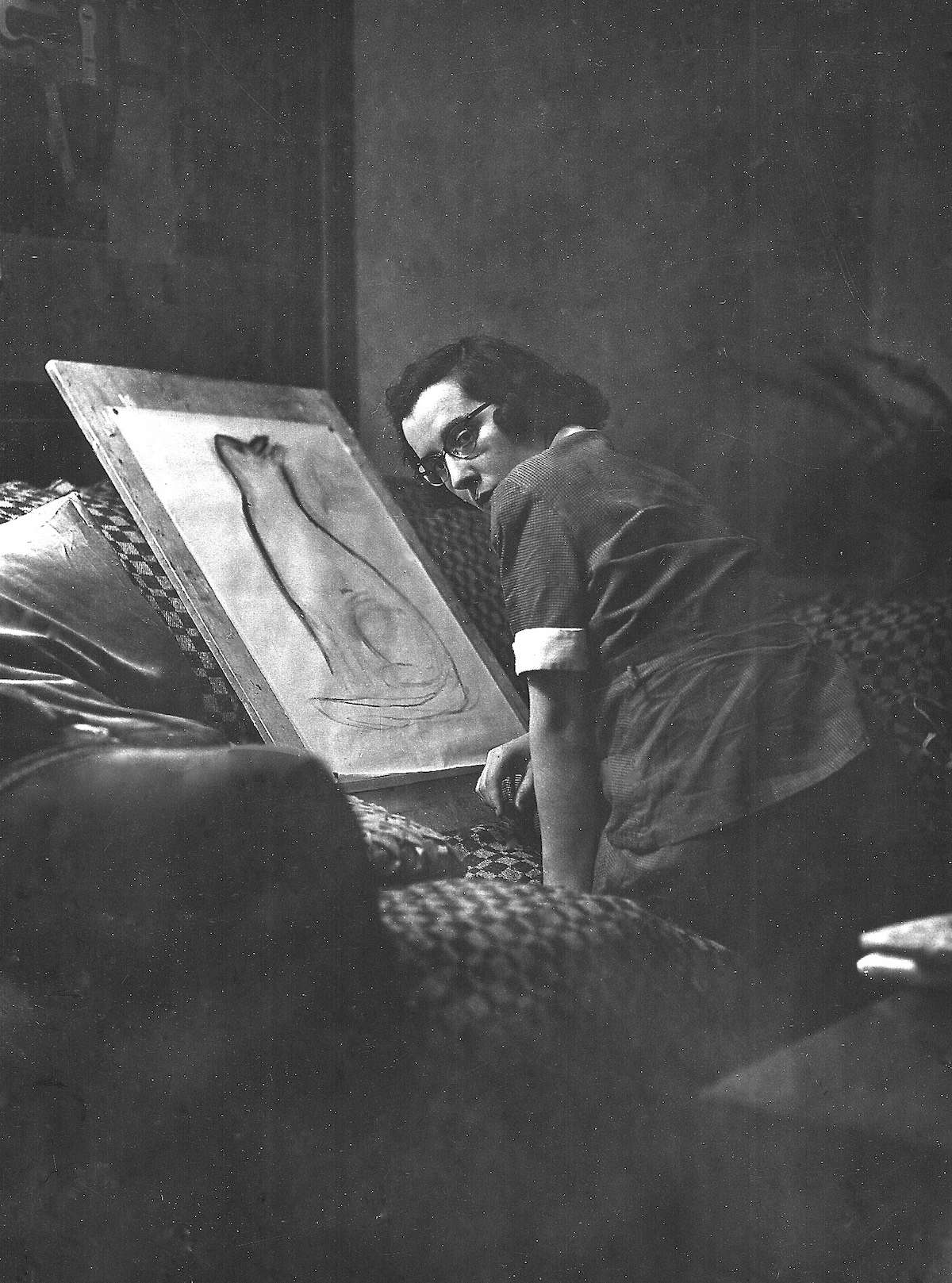



When my father returned to Canada, my mother was in London, studying at Goldsmiths College of Art.
Confident in his intentions, he pursued her to England, convinced her to marry him in Paris, and that marked the beginning of their life together.
A Prime Museum Along the Seine
In my parents’ time, many of the paintings now at the Musée d’Orsay were displayed in the Jeu de Paume, currently a photography center. With its scenic riverside location, iconic train station clock, and expansive main hall, the Orsay offers an unparalleled setting for Impressionist masterpieces.
🇫🇷 Travel Tips for the Musée d’Orsay
- Address: Esplanade Valéry Giscard d’Estaing, 75007 Paris.
- Visit the Orsay website for hours, ticket prices, and exhibitions.
- Getting there: Take the RER line C to the Musée d’Orsay Station.
- Purchase a Timed Entry Ticket for the Musée d’Orsay here.
Explore these fantastic celebrations for the 150th Anniversary of Impressionism in France.
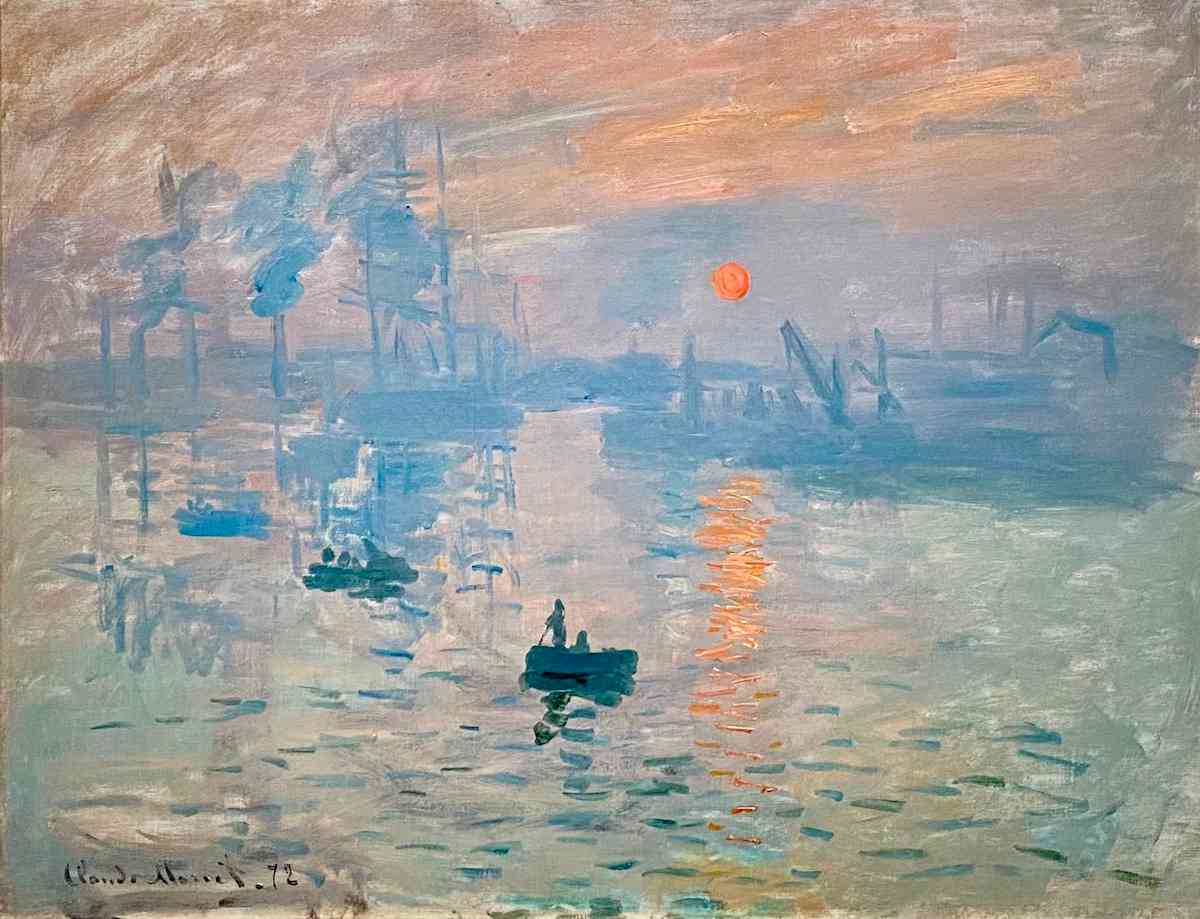

Musée Marmottan Monet: A Hidden Gem
One museum that existed during my parents’ time is the Musée Marmottan Monet, located in an empire-style townhouse in the affluent 16th arrondissement.
Ironically, the building was donated to the Académie des Beaux-Arts by influential art collector Paul Marmottan, who famously criticized Impressionism.
“One does not draw, one sketches; one does not paint, one brushes. This decline is primarily due to ignorance or the indulgence of art lovers, who are content to appreciate merely the impression.”
— Paul Marmottan
Today, it stands as one of the premier Impressionist museums in Paris, housing the world’s largest collection of Claude Monet’s works.
This includes Monet’s groundbreaking painting Impression, Sunrise, after which the entire movement was named.
Check out these top 10 activities to enjoy in Paris.
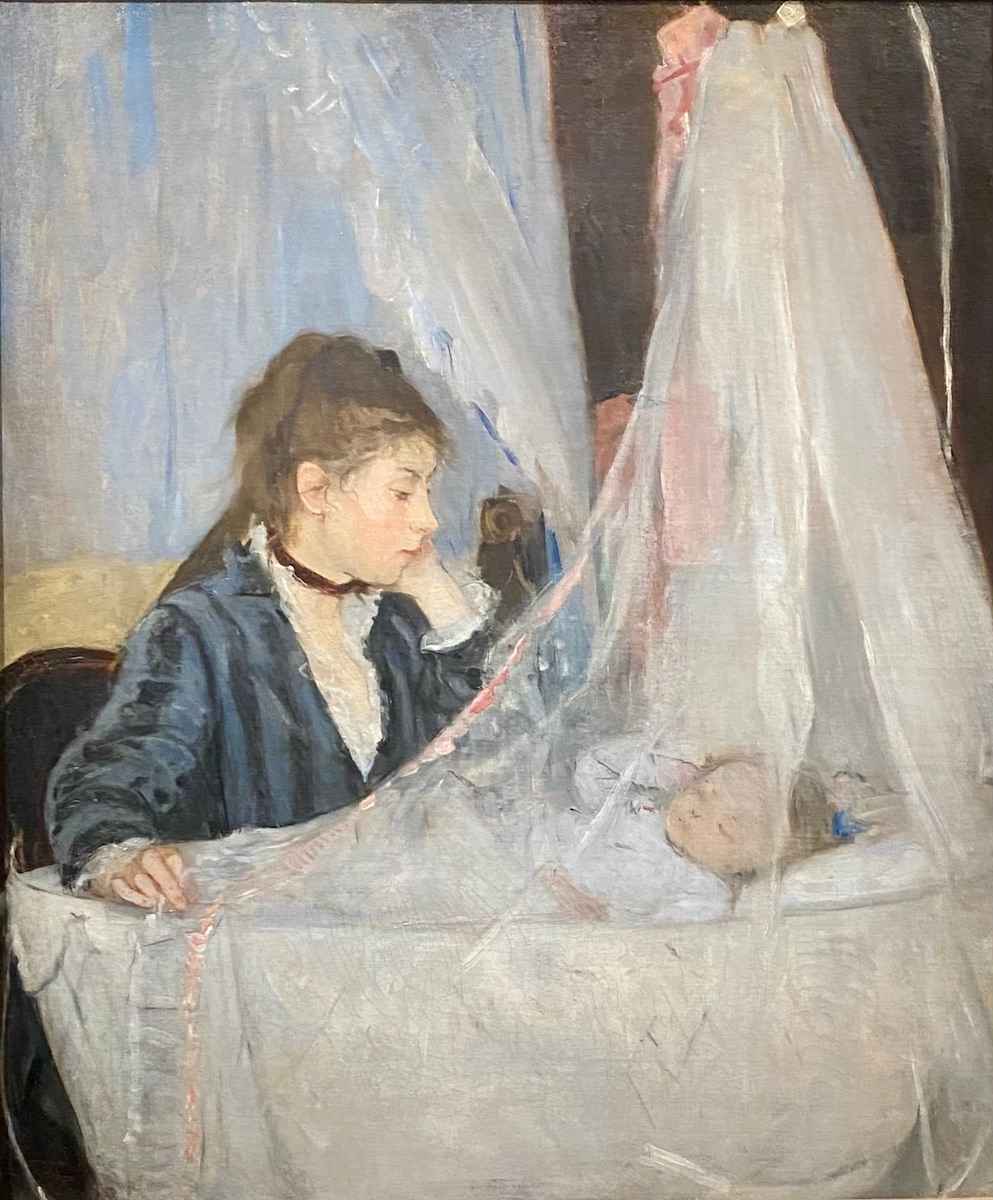

Berthe Morisot at the Marmottan
A visit to the Musée Marmottan is also a prime opportunity to discover the work of Berthe Morisot, one of the few renowned female Impressionist artists.
Morisot’s art invites you into the intimate side of the era, showcasing domestic scenes, leisure activities, and fashionable women.
Born into a wealthy family, Morisot developed an interest in art early on and formed a close friendship with Édouard Manet, who painted her frequently (she eventually married his brother Eugène).
A Founding Member of Impressionism
As the only woman included in the inaugural Impressionist exhibition in 1874, Morisot was a trailblazer within the movement.
Her brushwork (so delightful; her best strokes remind me of feathers) is light, swift, and confident. Her color palette glows, and her compositions feel fresh and unrefined—a true reflection of her goal to “capture fleeting moments.”
Forging an Artistic Path
I feel a kinship with her journey. Like my mother, Morisot found respect in a male-dominated art world without compromising her unique voice.
Even in the 1950s and 60s, my mother faced challenges as a landscape painter during a time when abstract art was in vogue. It required quiet determination.
There’s no doubt that strong female artists like Morisot paved the way for future generations.
🇫🇷 Travel Tips for the Marmottan Monet Museum
- The Marmottan Museum is located at 2, rue Louis-Boilly, 75016 Paris.
- Note: Impression, Sunrise will be on tour until January 2025.
- Book a guided tour of the Marmottan Monet Museum with a Skip-the-Line ticket here.
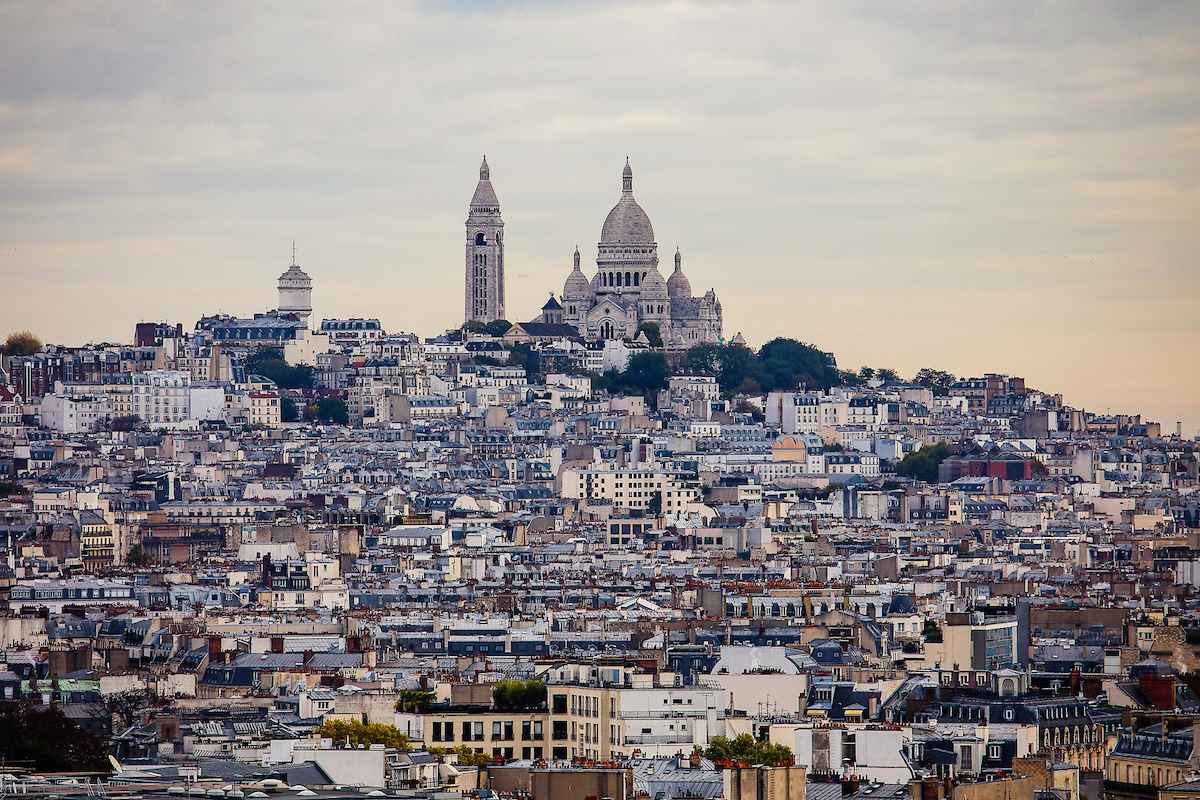

Montmartre: The Bohemian Hub
Of course, my parents must have visited Montmartre; who wouldn’t when tracing the path of Impressionism?
Today, it’s a bustling tourist destination, with street artists offering caricatures in the Place du Tertre and people flocking to vibrant cafes, making their way up to the stunning Sacré-Coeur.
However, the Montmartre of the late 19th century was much different.
The steep, winding streets were home to lively bars, artist studios, and cafes filled with spirited intellectual debates. Cabarets and cancan dancers were all the rage, creating an anything-goes atmosphere.
This bohemian vibe (and affordable rents) made it a magnet for artists like Renoir, Toulouse-Lautrec, and Degas.
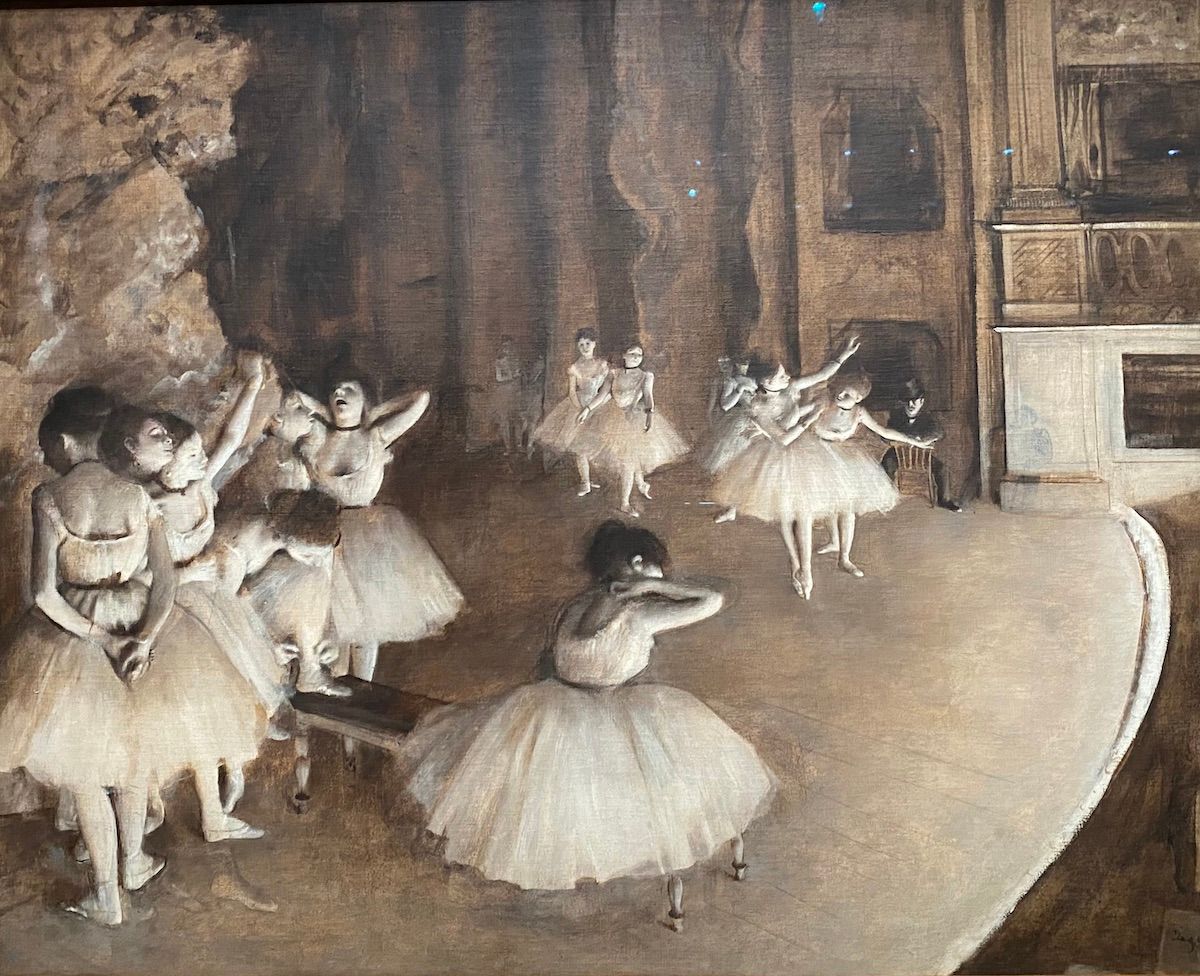

The Musée de Montmartre
The Musée de Montmartre provides a glimpse into this vibrant history. Housed in a 16th-century building, it was the home and studio of many notable artists. Renoir once lived here, as did Suzanne Valadon and her son Utrillo.
It was here that Renoir painted Moulin de la Galette, the very scene I had admired at the Musée d’Orsay.
🇫🇷 Travel Tips for Montmartre Museum
- Address: 12, rue Cortort 75018 Paris. Visit the website for more information.
- Getting there: Take Line 12 to Lamarck-Caulaincourt or Line 2 to Anvers (then ride the funicular to Montmartre).
- Your museum ticket includes access to the Renoir Gardens.
- Purchase a Skip-the-Line ticket for the Montmartre Museum here.
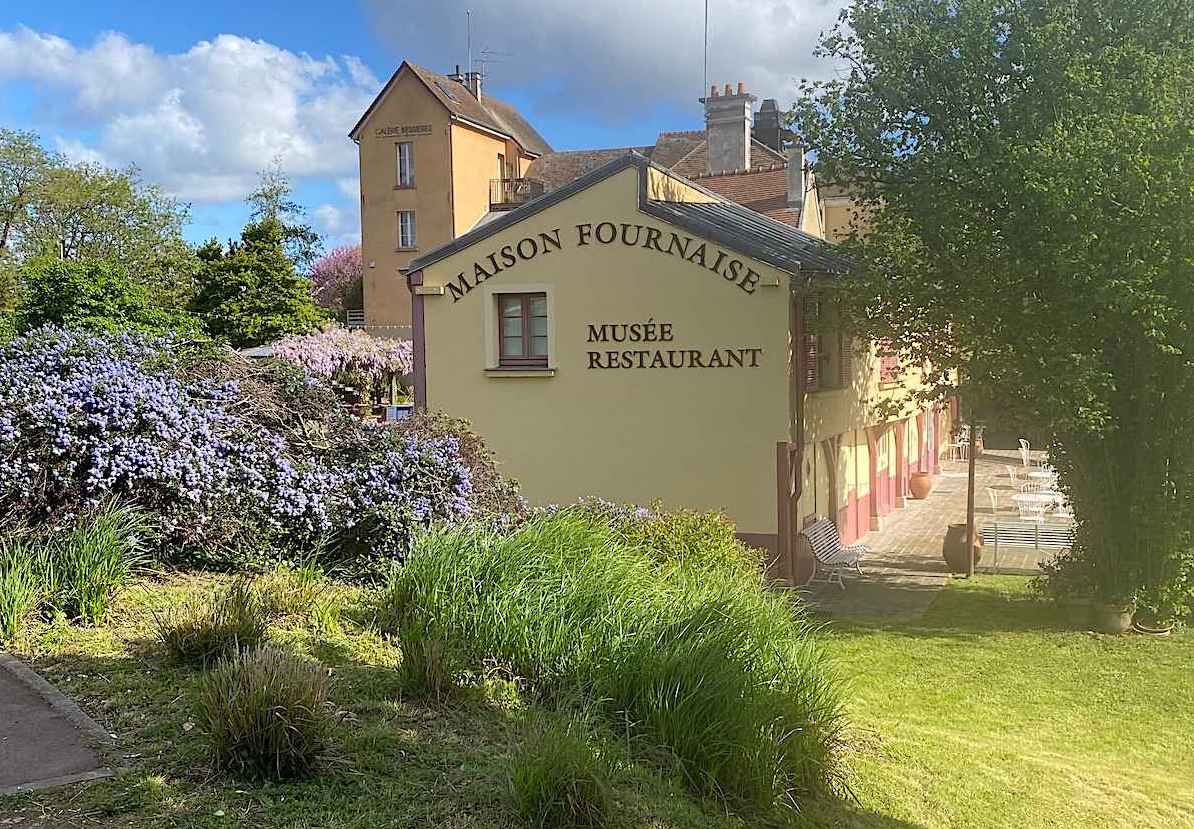

The Musée Fournaise on the Island of Impressionists
Renoir’s blockbuster painting, Luncheon of the Boating Party, was created on the Island of Impressionists.
This off-the-beaten-path island on the Seine, known as Île de Chatou, was considered “the loveliest spot on the outskirts of Paris” by Renoir.
It served as a serene getaway for French Impressionists like Renoir, Gustave Caillebotte, and Monet, who would gather to paint, row, and socialize.
While urban development has now encroached upon the banks, hints of its vibrant past can still be felt.
At the interactive Musée Fournaise, you can experience the lively atmosphere that flourished during the Impressionist era, along with the challenges these artists faced in gaining acceptance.
🇫🇷 Travel Tips for the Fournaise Museum
- Address: Impressionists Island, 3 rue du Bac, 74800 Chatou.
- Getting there: Take the RER A to Rueil-Malmaison Station. From Exit 1 “Rue des Deux Gares”, walk towards Chatou and cross the bridge. On the bridge, take the right path to reach the island.
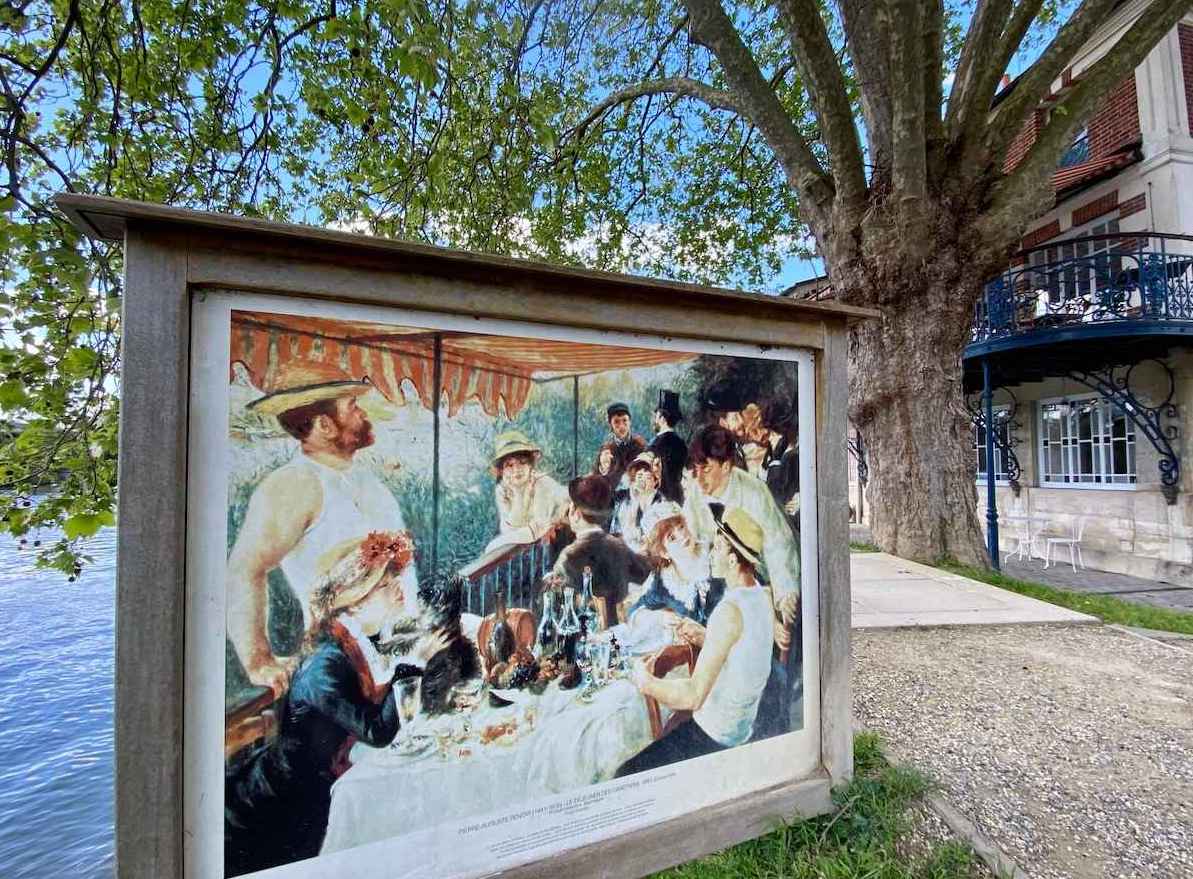

Luncheon of the Boating Party – A Masterpiece of Impressionism
On the island, several other notable landmarks are worth exploring.
A large reproduction of Luncheon of the Boating Party along the riverside path recreates the sunny ambiance of yesteryear. It becomes even more meaningful when enjoyed alongside a meal at the Restaurant Maison Fournaise, the very setting depicted in the painting.
Luncheon of the Boating Party is regarded as one of the finest Impressionist paintings in Paris, perfectly encapsulating a moment of leisure among friends.
The fourteenth figure in this delightful gathering is Gustave Caillebotte, a boating enthusiast and also a key Impressionist artist.
Aline Charigot, who Renoir eventually married, embraces a small dog on the left, while Alphonsine Fournaise, the restaurant owner’s daughter, is elegantly featured, along with a variety of other friends, including actresses, bureaucrats, and even the former mayor of Saigon.
This picturesque scene of joy and camaraderie evokes memories of my own parents’ wedding.
Paris – The Creative Nexus
They tied the knot at the British Embassy in Paris, celebrating with a humble gathering at their modest Left Bank hotel, attended by around 30 guests.
“How did you know so many people?” I casually asked my mother. “Who were they?”
“Oh, you know,” she waved her hand dismissively. “Artists and musicians. People your father knew from art school.”
I didn’t exactly know. It wasn’t a topic they often discussed.
I envisioned them amid a setting akin to Luncheon of the Boating Party, surrounded by young artists brimming with ambition and creativity, plotting their futures amid the inspiring backdrop of Paris and buoyed by the rich artistic heritage of France.
Dive Deeper into Paris’s Fascinating History
Explore Coco Chanel’s favorite haunts with Coco Chanel in Paris.
Follow in the footsteps of Oscar Wilde for a uniquely witty experience in the city.
Think Montmartre was racy? Discover the decadent cafés of Montparnasse.
Planning a visit to Versailles? Uncover some scandalous history about the palace and learn how to organize your tour.
